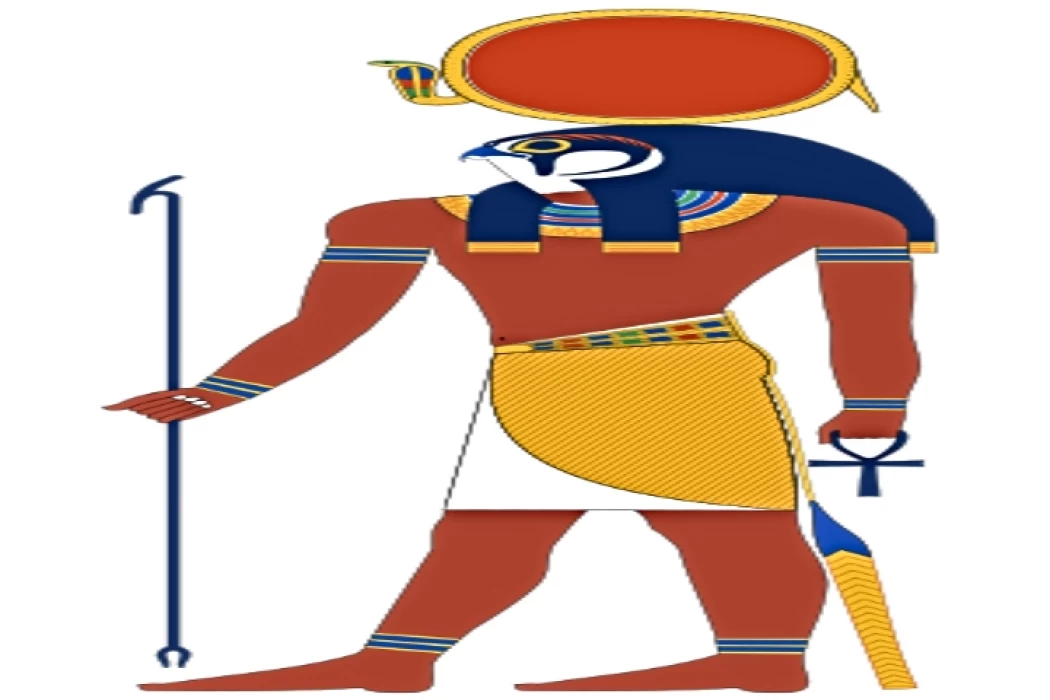
One of the ancient Egyptian gods (Re-Hor-achti)
Horus Akhty in ancient Egypt is the name of one of the forms of the god Horus, and it literally means Horus of the horizon. The horizon here does not refer to the line dividing the sky and the earth, but to the area illuminated by the light of the sun before dawn.
Horakhty is associated with the East, and can be considered the god of the morning sun. Horakhty is mentioned in the Pyramid Texts of the Old Kingdom, along with the god Ra himself, and the great similarity between the two gods means that they were soon united in the form of the god Ra-Harakhty and as Horus on the horizon.
In ancient Egyptian, Horakhty was called Har-em-Akhty, and in Greek, Harmakhis was worshipped in the form of a sphinx. Khafre of the 4th Dynasty, and later it was regarded as a statue of Ra-Horakhty. Importantly, the Kafr El-Sheikh Museum was unveiled by the President of the Republic Abdel Fattah El-Sisi in 2020, among those archaeological projects which Egypt returned to the map of openings within the year 2020. The museum is situated adjoining Kafr El-Sheikh University in Sanaa Park. It comprises several exhibition halls for displaying artifacts, visual preparation and educational activities for museums and conferences, as well as a service building.
Kafr El-Sheikh Museum displays a rare archaeological statue, which is a representation of the syncretic god who combines Ra and the god Horus, “Ra Horakhty,” which means “Ra Horus from between the two horizons.” It is one of the museum’s distinguished collections.
Re-Hor-Achti ( God of ancient Egypt ) is the main god for Abu Simbel temple ( Ramsis II temple ) its represented in Hours god with falcon form and the sun disk above his head which point to Re god
According to the museums sector, this doctrine spread particularly in northern Egypt, where the city of On (Heliopolis) was located, and in the south the worship of Horus spread. Then, after the union of the northern and southern sides, the god of the north and south was united in the form of Ra-Hor-Akheti.
Re-Hor Achti worshiped in Abo-Simbel and Wadi El-Saboaa is sometimes symbolized by the form of a human being surmounted by the head of a falcon carrying on its head a sun disk surrounded by a snake "Urius"
It is a symbol of the union between the sun god "Ra" (whose faith spread in particular in northern Egypt, where the city of "Heliopolis" was the seat of his worship), and the god of heaven "Horus" (whose faith spread in Edfu in southern Egypt) and after the union of the northern and southern faces united the priests Between the gods of the North and the South in the form of (Ra-Harakhti) and the union between them symbolized the divine journey of the sun's rays from east to west
The ancient Egyptian believed that this divine entity participated in the creation of the world and that the sunrise is a symbol of this creation, as they considered the daily cycle of the sun from its rising and setting and then it's shining again on the next day, which is nothing but a symbol of regeneration and from here, Ra considered the supreme power of creation as he considered the Lord of life ... there is no life without the sun














